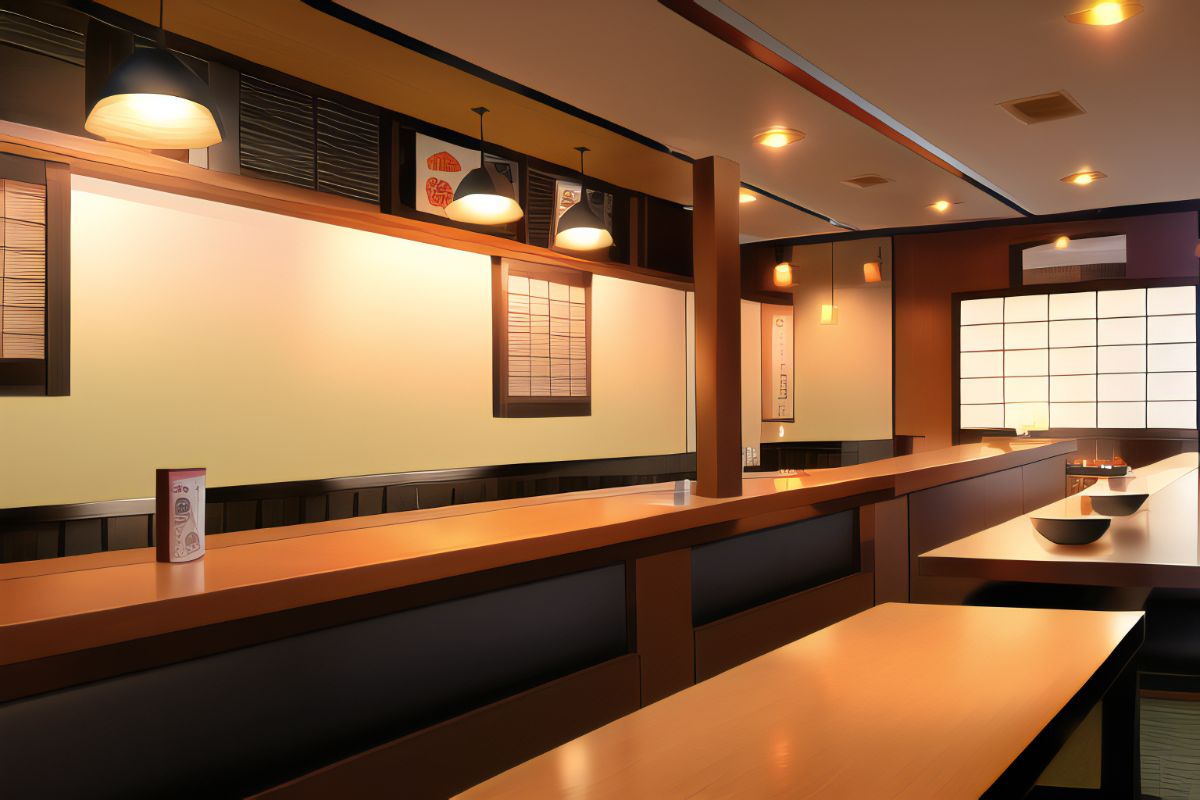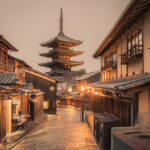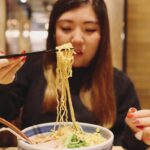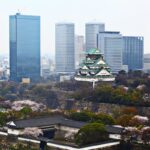Japan has a vast array of ramen restaurants and there are a plethora of options.
Sure, you may find a chain of ramen restaurants yet you should get off the beaten track and opt for one that should provide you with an unforgettable experience.

While many of the best ramen restaurants remain in Tokyo, you should find some of the best ramen in other major cities. These include Osaka, Sapporo, and even further afield.
In this guide, we will look at the top ten ramen restaurants throughout Japan.
- Nakiryu
- Toripaitan Kageyama
- Ushio
- Kinryu Ramen Dotonbori-ten
- Siosenmon Namba Ryukishin RiZE
- Ramen Bokkoshi
- Butasoba Tsukiya
- Rishiri Ramen Miraku
- Konjiki Hototogisu
- Sapporo Ramen Haruka
Nakiryu
- Address: 2-34-10, Minamiohtsuka, Toshima-ku, Tokyo
Once Nakiryu received a Michelin star it became the second ramen restaurant in Japan to achieve the award. With it came notoriety and an exceptional waiting time, perhaps two hours during their lunch service.
Many would say it is worth the wait, especially their shoyu ramen which comes with three kinds of barbecued pork (chashu) as toppings.
The noodles are gloriously smooth and you can also expect a half-boiled egg, shrimp wonton, and salted bamboo shoots.
Toripaitan Kageyama
- Address: 1-4-18 Takadanobaba, Shinjuku-ku, Tokyo
Another of Tokyo’s finest ramen restaurants is Toripaitan Kageyama which is relatively close to Takadanobaba Station.
This may be one of the few ramen restaurants without a wait though that may be a surprise once you try their tori paitan.
This is a stupendously thick, white soup that comes with chicken. For a refreshing and rich soup, try paitan ramen which is wonderfully filling and comes with noodles made by Asakusa Kaikaro.
Kinryu Ramen Dotonbori-Ten
- Address: 1-7-26 Dotonbori, Chuo-ku, Osaka
Should you find yourself hungry in Osaka then head to Kinryu Ramen Dotonbori-ten. Osaka is known as the Foodie Capital of Japan and this is their veteran ramen chain.
Plus, the ramen restaurant is hard to miss due to the giant dragon sign at the entrance. You may see a line outside yet it does move quickly which should be a relief.
There are merely two types of ramen on the menu; chashu ramen and tonkotusu. The chashu ramen remains popular with tourists due to its light flavor from a broth made from chicken and pork bones.
A visit may seem more authentic by the tatami mats in front of the tables so you can take your shoes off and socialize.
Siosenmon Namba Ryukishin RiZE
- Address: Namba Comejirushi 1F, Namba CITY, Nambanaka, Naniwa-ku, Osaka
There are several reasons to visit Siosenmon Namba Ryukishin RiZE. Top of the list is their status as the first shio ramen specialty store in Japan.
Of course, you will need to try their Shio Soba ramen dish which is a lighter take on ramen and features a salt seasoning, ideally with mussels for a suitably complex dish.
Take in the pork, chicken, and vegetables for a hearty broth, and then discover the mussel extract to set it off.
You can expect two chashu variations for toppings; fatty pork intestine and chewy, soft pork shoulder.
However, the noodles also deserve acclaim as they use the identical Chinese rock salt that is featured in the soup for a balanced bowl.
Ramen Bokkoshi
- Address: 2-6-10, Nishishinsaibashi, Chuo-ku, Osaka
The signature dish at Ramen Bokkoshi is their tori paitan ramen which is mainly due to how thick and creamy the soup is.
Then there is the richness of Hyogo Tanba chicken which is then brought out even more by a chicken flake-enriched oil. Then there are the two toppings, smoked and boiled chicken.
Butasoba Tsukiya
- Address: Eat Play Works 2F, 5-4-16 Hiroo, Shibuya, Tokyo
For tonkotsu ramen, head to Butasoba Tsukiya in Shibuya. The thick, cloudy, and rich broth is created from boiled down bones of pork and you find a variation of it here.
Buta soba is essentially pork noodles yet the creamy broth has been replaced with a refreshing soup for a light alternate take.
It remains deliciously flavorful as the pork bones are simmered rather than boiled with the broth skimmed for a clear serving.
The ramen is still created with a laborious process but the rest of the dish is relatively simple.
Thin noodles from Fukuoka flour, chashu pork sliced thinly, and green onions. However, you may want to sample the broth on its own before adding the toppings.

Rishiri Ramen Miraku
- Address: Honcho-67 Kutsugata, Rishiri, Rishiri District, Hokkaido
Rishiri Ramen Miraku is known, not only for some of the best ramen to be found on the planet, but also for how remote the restaurant is.
If you can get to the island of Hokkaido then Rishiri Island is a further ferry ride away. While many domestic travelers head to Rishiri Island for a variety of reasons, many make the trip simply to get to the restaurant.
The restaurant has been featured in the Michelin guide and prides itself on sourcing local ingredients. That includes Rishiri Kombu, a type of kelp that is harvested on Rishiri Island itself.
Expect to find simmered kombu with savory and rich soy sauce with a silky texture to the dish.
Try to get there in good time as service is solely between 11:30 and 14:00 and you can expect a queue of people before the restaurant even opens.
Ushio
- Address: 2-4-4 Kandaawaji-cho Chiyoda-ku, Tokyo
For a modern take on traditional soy sauce ramen, head to Ushio in Tokyo. If there is one bowl to try it is Nichon-ichi shoyu soba ramen.
If you have tried ramen from Rishiri Ramen Miraku it may taste faintly familiar. That’s because the dish uses the same high-quality kelp from Hokkaido with its soup and noodles.
Though here the broth may be the star as it uses unpasteurized soy sauce that is left to age for the base. Then the ramen is taken up a notch with fish for a stupendous umami flavor.
Do not forget the smoked duck slices that come with each dish as well as the vegetables, flavored egg, and pork shoulder chashu.
Ramenya Toy Box
- Address: 1-1-3 Higashinippori, Arakawa-ku, Tokyo
You can find Ramenya Toy Box on the Michelin Guide which mainly attests to owner/chef Takanori Yamagami.
His constant quest for improvement and suitably inquisitive mind has meant rave reviews for their soy-sauce ramen.
This is a pure soup which is woven purely from soy sauce, water, and chicken for a deliciously simple yet reassuring complex dish.
What was once a blend of just two soy sauces now involves ten types, find out how they go together when you visit.
Sapporo Ramen Haruka
- Address: 3-6 Minami 5-Jo Nishi, Chuo-Ku N Grande Building. First Floor, Ganso Ramen Yokocho, Sapporo
The city of Sapporo is well known for its rich miso ramen and you can find out why when you visit Sapporo Ramen Haruka.
Thankfully, the ramen restaurant is easy to find as it is at the entrance of Ganso Ramen Yokocho, Susukino’s renowned ramen alley.
Its inclusion amongst the best ramen restaurants in Japan is based on its modern take on the dish.
You should expect a wait but once you get in, try their bold cheese ramen, the spicy miso ramen or a tomato and basil version.
As you may expect from a top-quality ramen restaurant, there is limited seating available. Another feature that separates Sapporo Ramen Haruka from the competition is their heavy metal styling.
That includes stickers on the seats, their Metallica-invoking logo and their choice of rock music.
Final Thoughts
Ramen can be classed as something of a tradition in Japan, even if it originates from China. Some of the top ramen restaurants are up there because of their bold takes on the dish.
That may be a cheese ramen or creating a clear broth instead of a creamy one. Other ramen restaurants may do the simple things very, very well by simply using three ingredients.
If you do want to try one of the top ramen restaurants in Japan, make sure you check their opening times.
Some may seem more exclusive and elusive than others. However, for many, simply get there early and queue up to be treated to a phenomenal dish.
Frequently Asked Questions
Where Did Ramen Originate From As A Dish?
It may be something of a surprise to learn that ramen did not originate from Japan but actually China. Specifically, China in the 1800s which is where ramen is thought to have originated from.
The concept of noodles in a soup-like broth came with Chinese immigrants as they came to Japan in the late 19th century and at the start of the 20th century.
This was after the Meijiichin in 1868, also known as the Meiji Restoration.
How Are Pho Noodles Different From Those Used In Ramen?
There is a vast difference between pho noodles and ramen noodles.
This comes down to the type of flour used; glutinous rice flour is used in pho noodles while wheat flour is used in ramen noodles.
- 16 Best Websites To Watch Japanese Movies With English Subtitles - May 11, 2023
- Is ZIPAIR The Best Airline For Traveling To Japan? - May 11, 2023
- Ryu Murakami Vs Haruki Murakami – Which One Should You Read? - May 11, 2023








